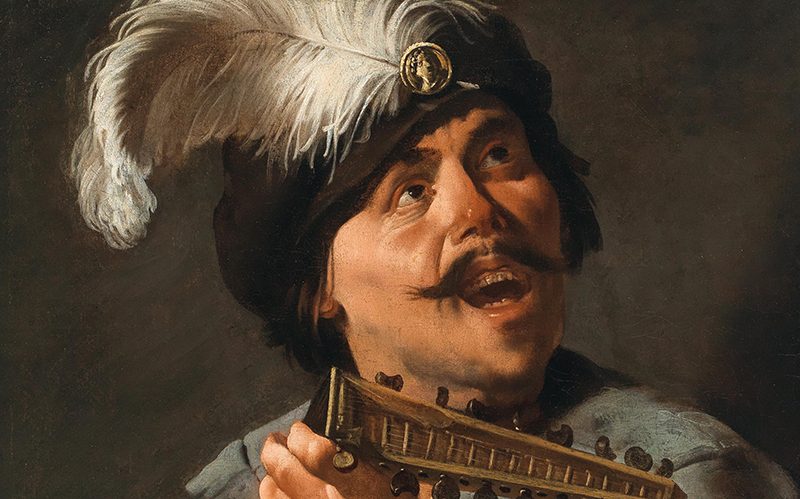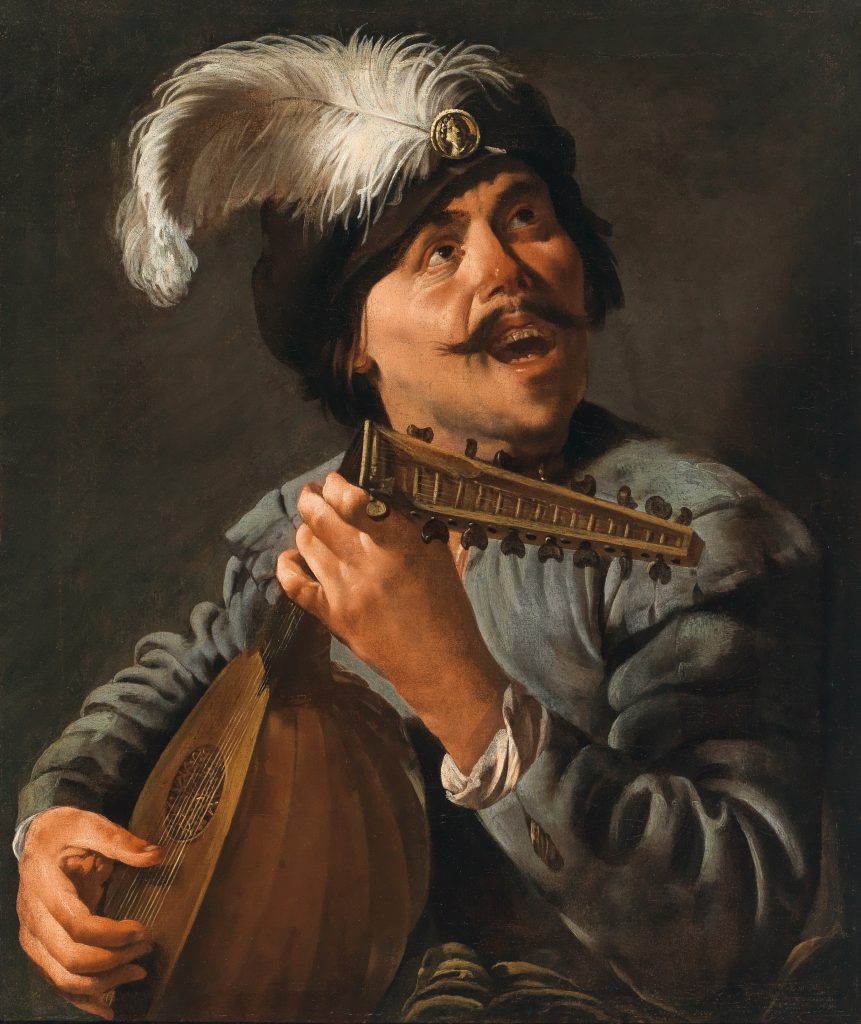
Colour, light, texture … this portrait of a lute player is full of the subtle motifs suggestifs of the 17th century. An impressive demonstration of the stylistic brilliance of the Utrecht Caravaggist Hendrick ter Brugghen.
When is a lute, or luit, more than just a lute? In the raucous taverns and run-down artists’ ateliers of Rome’s 17th century “red-light district”, the guttural dialects of the Low Countries could be heard spoken and in song as the bright young things of Utrecht or Antwerp’s art scenes came south to follow in the footsteps of the master of realism and subtle symbolism, Michelangelo Merisi da Caravaggio (1571–1610).
Clustered in the sordid slums around the church of Santa Maria del Popolo, this pack of enfants terribles was led by trailblazer, Hendrick ter Brugghen, whose use of colour, light and texture arguably rivalled that of even the tempestuous Italian maestro himself. Catering to the sexual fantasies of their patrons, including Rome’s high clergy and noble banking families, these Caravaggisti created scenes of pouting castrati and leering musicians, as illustrated by ter Brugghen’s, vivid painting, A Lute Player.
This is not merely artistic symbolism, however. It is also a celebration of a secret cult of Bacchus, informed by the Baroque penchant for theatre and spectacle. The Low Countries had many “chambers of rhetoric” whose members, or rederijkers, took their dramatic inclinations with them to Rome. Ter Brugghen was a member, in the Eternal City, of a group known as the Bentvueghels, which roughly translates as “birds of a feather”. They had secret initiation rites and held neo-pagan ceremonies before a 4th century sarcophagus of Saint Helena, which, due to its late-Roman Bacchic motifs, they held to be a shrine to wine and song. They also scrawled graffiti on the walls of taverns, arguably contributing to the development of the distinct genre of caricature in Rome. This depiction of the licentious Lute Player was painted in Utrecht in the 1620s following ter Brugghen’s return from his years of Roman revelry. It is a fitting memento of his formative, sultry southern sojourn, but is handled with a northern sense of crisp texture and with a virtuosity of light typical only of the greatest Dutch masters in their Gouden Eeuw, their Golden Age.
Damian Brenninkmeyer is Specialist for Old Master Paintings at Dorotheum London, where Sigmund Oakeshott works as an art historian.
AUKTION
Old Master Paintings, 3 May 2023, 6 pm
Palais Dorotheum, Dorotheergasse 17, 1010 Vienna
oldmasters@dorotheum.com
Tel. +43-1-515 60-403














